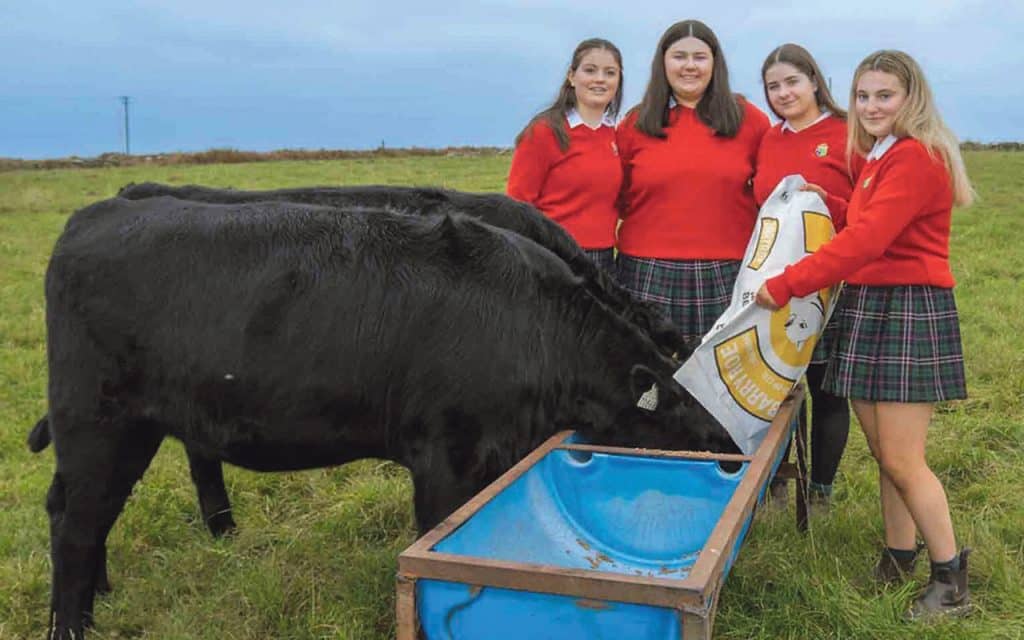
It’s been a busy month here, as good weather meant that cattle could get back out to grass, with calving getting underway and progressing nicely. There are always a few things that will keep you on your toes though. I spotted one calf drawing hard one day, so the vet was called; hopefully the issue has been nipped in the bud.
The oldest cow in the herd had twin bulls the weekend before last. There’s always a few sets every year and, in some ways, I’d rather not see them. They’re a bonus when they go right but create work if something goes wrong, or take a lot out of a cow and she can end up slipping in calving date in the two years after having them.
This particular set seemed ok. One was sucking while the other took a bit longer to get up, so I gave him powdered colostrum as insurance. The fact they were bulls was a welcome boost to bull calf numbers because the ratio was firmly in favour of heifers so far. Put it this way, if I was a dairy farmer using sexed semen to get heifers, I’d be delighted with the results. It’s only a small complaint, as once they’re healthy, that’s the main thing. Calving is two thirds of the way now, so there’s still hope the numbers will balance out.
They went out to grass last week and all was going well. Then I got a reminder of how ruthless nature can be. For shelter purposes, I gave the cows a run of two fields but moved them on Sunday morning. I was finishing up the jobs when I spotted one calf left behind so ended up escorting back to the main group. He was lowing for the cow and that triggered the other cows but not his own mother who kept her head down grazing. That was unusual. He finally spotted her but the cow remained uninterested; when he made three attempts to suck, he was kicked off each time.
I’ve seen this before. This cow knew her best chances of survival were to just rear one calf, so she abandoned the other twin. His hunger meant getting him in wasn’t an issue and a bottle of milk with a teat on it meant he followed me the entire way to the shed, thereby beginning a bucket rearing enterprise.
It was a small blip in what has been one of the better month’s of March that I can remember. Cool and dry, it made working in it a pleasure. Even when the bad weather came, it was in small doses, and for the first time I can recall, heading into the last week of the month, there wasn’t a calf in the shed in March.
March’s weather was a major plus and, with an odd exception, the cow and calf pairs went out to grass within 24 or 48 hours after calving. The strong northerly and easterly winds of the weekend before last made the working side of the yard bitterly cold last week. If there were positives, it was that it dried up the heavy rain quickly, and also cows and calves were easy to locate, as they knew where the shelter was. Some of the older cows were let out hours after calving. The sun was shining and there was plenty shelter, so out they went.
The heifers wrapped up calving around March 24, and for the most part, they calved within three weeks. Most managed on their own and, save for one calf lost, due to a leg being down, there was very little intervention.
They remain separate at grass from the older cows and, like last year, they will remain at home for their first summer rearing calves.
With heifers out of the way, there’s a clear run at the cows for now, and while they’re taking a mini-break, five days with no new calf, they’re making up for it now and through the first week of April.
Outside of finishing cattle, the only ones left in the shed are the cows due to calf, the breeding bulls and a few smaller heifers that won’t be bred. They are in the young stock yard and will be brought down home and left graze on the cow block instead. Convenience meant they were left inside until they’re transported down home. There’s grass for now where they are but it’s easier to separate them from the main group this way rather than try and round them all up at short notice. It’s a small insurance against slow regrowth in grass if conditions remain cool.



